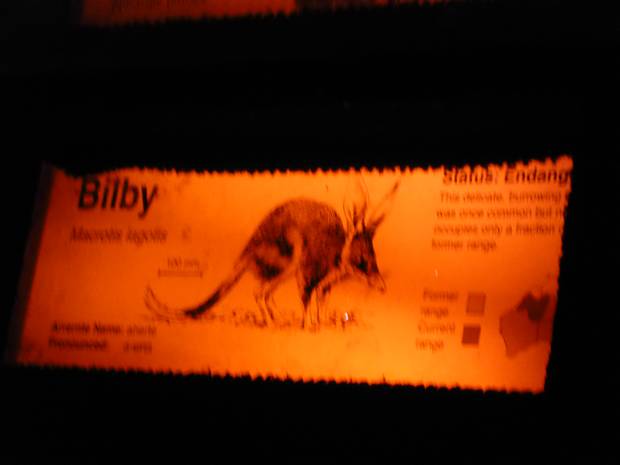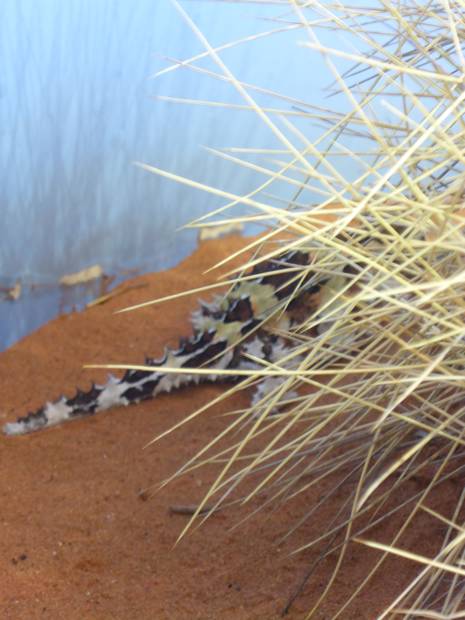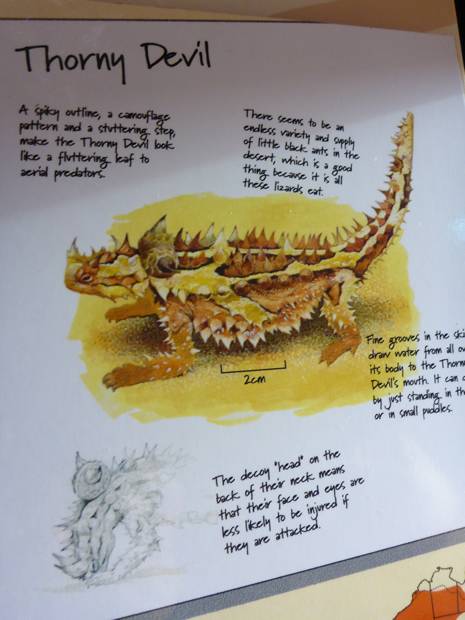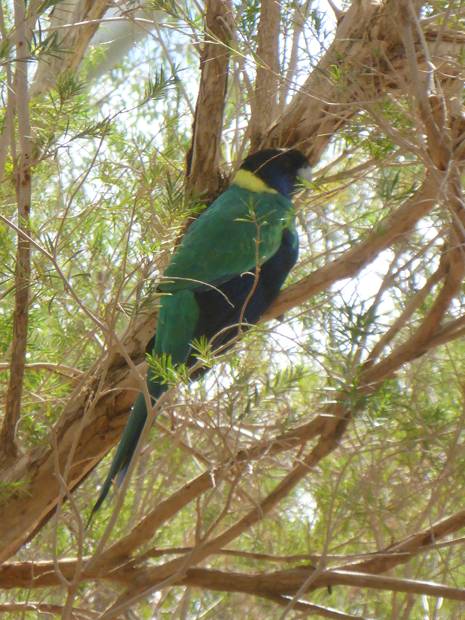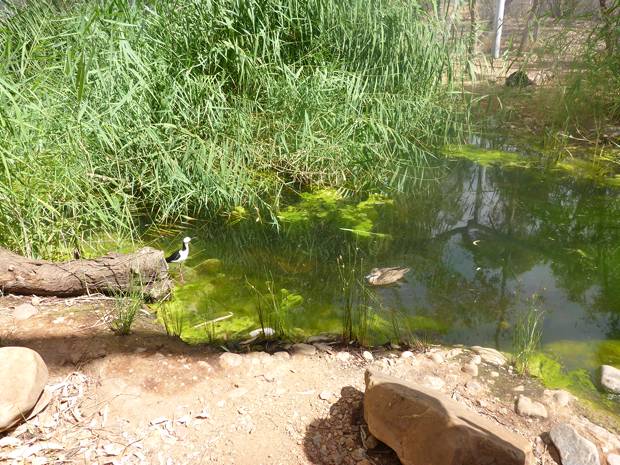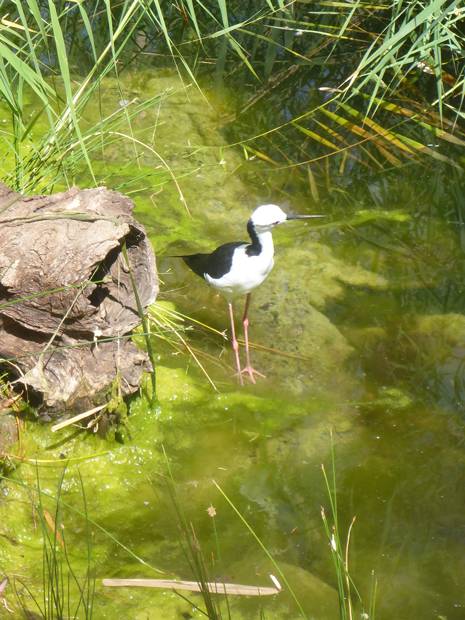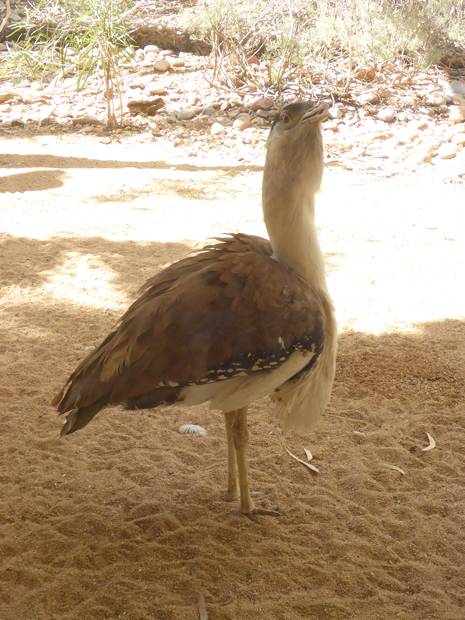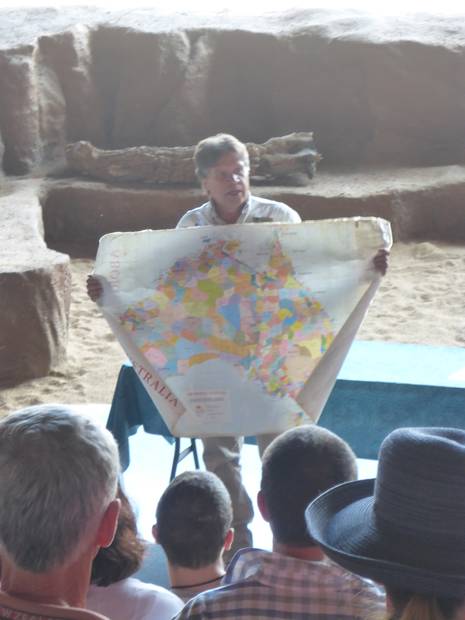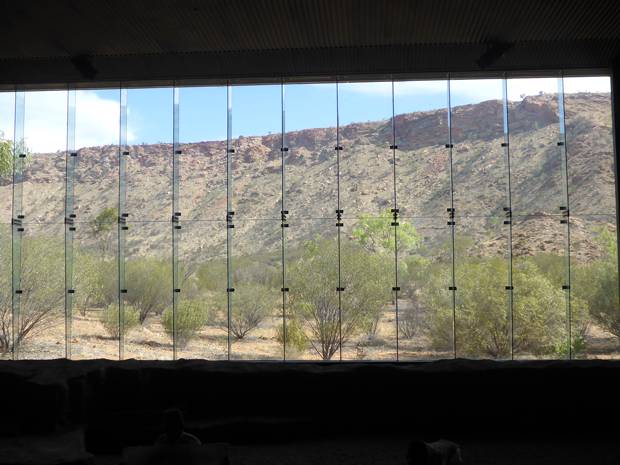An Eagle steals the Show and Don't tell Prince Charles!

|
An Eagle steals the Show And Don’t Tell Prince Charles We all sat in the amphi-theatre shaded from the sun awaiting the start of the desert bird show. The Park brings together some of the many species that live in the vast red centre of Australia that otherwise we could only imagine live there. It is an environmental and educational facility which both enlightens the likes of us and carries out research projects to better understand the nature of the central desert. It covers 3212 acres and over 100,000 people visit each year The temperature had just topped 45’ and I was gently fanning myself when a movement above the MacDonnell mountain range that provides a backdrop to the park drew my eyes upwards. By the time the young lady came out with her, familiar to us, barn owl most of us were taking glances away from our host. “What are you looking at?” She queried. Eagles soared majestically over the heights giving her a welcome distraction to tell us about because the show had been drastically cut short as it was just too hot for the other birds to make an appearance. A heat stressed desert bird remains still and hidden to retain moisture and energy. But the pretty little barn owl was willing to perform. It is members of the Arrernte Clan that run the park and we spent time with both a guide and the director from the clan while we were there. Taking the short distance from the open air theatre to the nocturnal house was a genuine walk in the baking red centre of country as the site is an area of outback fenced off and changed only by the addition of a few buildings. Dingoes lie in and under the shade of a hollow log, a bustard looks agog at us and an emu struts across its little pen. All the while the guide talks about the things we are looking at but the group is spreading out, some folk heading quickly towards the cool dark of the nocturnal building miss out on what is being said. The heat is becoming something of a distraction. This excursion has been a second choice for us as the Simpson Gap walk was cancelled due to the heat. Others in our train group, including the physically less able, have gone off for helicopter and fixed wing aircraft scenic flights and camel rides and others have left for Uluru Rock. Its masterful organisation on The Ghan Trains. See the beautiful green lizard camouflaged on its tree trunk and there were fish in a tank that come from the part of the Finke River we crossed, but where there is permanent water above ground. Thinking their existence must be safe from threat out there in the wilderness would be wrong. Backpackers and campers who wash themselves, their dishes and their clothes in the river water are polluting it with chemicals. When we were on the Machu Picchu trek we were only allowed to use chemical free soap; a little more education needed there. I have had to settle for two photos of pictures of the pretty little Mata and Bilby as they were hidden away in their mini deserts. We lingered in the nocturnal house before venturing through an aviary of colourful desert birds until we saw a familiar black and white stilt identical to the many that thrive on the shores of the river at Whangarei. We were on our way to the lecture hall where we first saw a film of the natural desert world on a wide screen. Once it was over the screen descended to reveal a vast glass area looking directly up to the MacDonnells. To fill in our time where our visit had been otherwise shortened by the excessive heat we were then fortunate in having an elder of the Arrernte people and the Director of the park give us a talk about the ancient marriage laws that Aborigines have practiced for tens of thousands of years to prevent inbreeding. When the Prince of Wales visited he was advised not to give this particular talk to the Prince, maybe as it correctly contradicts Queen Victoria’s thinking that combining royal the families of Europe through marriage was a good idea or more possibly in view of the behind the scenes activities of the modern royals! Our host laid down his map and held up a yellow card upon which were two outlined black squares drawn at right angles to eachother, so there were eight available points. If more than eight clans lived close to eachother then more squares could be added to the diagram providing more points. Each clan had its own point so young couples were picked from different points, in other words a different clan. They had slightly different skin colours which were given names, so this method is called selection by skin names. Their childrens’ partners were then chosen from other points in an ordered rotation. This makes our methods look quite random but looking back in English history one can see a kind of ‘system’ when young people from different villages looked for partners at dances held regularly in village halls. Marriage alliances across clans were often made when clans met together in gatherings like the one in the painting I included on our South Australia Gallery visit in Adelaide and they helped solve disputes that might otherwise result in warfare. Our coach driver on the way back to the train talked of how valued the Aborigines have always been as part of the labour force through the opening up of outback country to the present day. He pointed out a school where all the children learn two Aboriginal languages before they learn English as a second language so they can live in both worlds. Back in time it was thought disrespectful to speak the language of a different clan directly to them. So elected members would go to a different clan and learn their language and then go back to their own clan and teach it. They were multi-lingual for reference purposes only and not communication. This way languages are preserved. Back on board our train we spoke just one language after a hot day in the desert, “See you in the bar shortly!”
|







